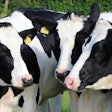
As feed costs fall back, prospects are looking up for farmers in India’s second largest egg-producing district, Namakkal.
For the past four years, margins for egg producers in this district of Tamil Nadu state in the south of India have been particularly tightly squeezed by higher prices of inputs, particularly for feed, and low egg prices. This prolonged period of shrinking margins forced many farmers to abandon their businesses.
Prices of key feed ingredients — corn, rice bran, as well as soybean, sunflower, and mustard seed meals — “skyrocketed” by around 20 percent in 2013 and 2014, according to The Hindu. The situation was exacerbated by fuel price hikes that increased the costs of transporting these vital raw materials into Tamil Nadu from other states.
With producers opting not to replace their flocks at the end of lay, daily egg production in the state fell from 33.6 million in 2013 to 28.1 million in 2017, according to A.K.P. Chinraj, president of the Tamil Nadu Poultry Farmers Association.
Now, the prospects for the sector are looking brighter, he told the newspaper, as feed costs have fallen again, and egg prices are on the rise.
Commercial egg production began in Namakkal only around 30 years ago, and it was then dominated by small units and manual labor. Since then, the sector has grown and modernized so that the zone now stands in second place behind Hyderabad (Telegana state) in terms of total national production, with daily output of around 30 million eggs.
Record grain harvests predicted in India
For India’s poultry and livestock farmers, there are good reasons to forecast stable feed prices in the coming months.
The latest estimate from the agriculture ministry put this year’s corn harvest at a record 28.7 million metric tons (mmt), according to a new GAIN report from the U.S. Department of Agriculture Foreign Agricultural Service (FAS). For the previous year ending in October 2017, production was 25.9 mmt.
As a result of plentiful supplies, domestic corn prices have weakened for most of this year even though demand from the poultry and livestock sectors has been strong. An estimated 16 mmt of national corn production is used in the feed industry.
Rice, wheat, and pulses are also expected to break previous harvest records this year.
Seeing potential growth in the sector, Indian agricultural company Royal Agro Farm has recently announced plans to enter the poultry industry with a modern facility including a hatchery, breeder farms, and breeder growing in Tamil Nadu state.
In 2016, Andhra Pradesh was India’s top poultry producing state, and the government put in place plans for further double-digit growth in the sector, including financial incentives for expansion.
Based on official data, India had over 404.5 million laying hens in 2016, according to FAOstat, the statistical arm of the United Nations’ Food and Agriculture Organization (FAO). The most recent figure to be published, this compares with just over 322 million birds in 2012. Over the same period, the country’s egg production increased from almost 3.66 mmt to 4.56mmt.


















